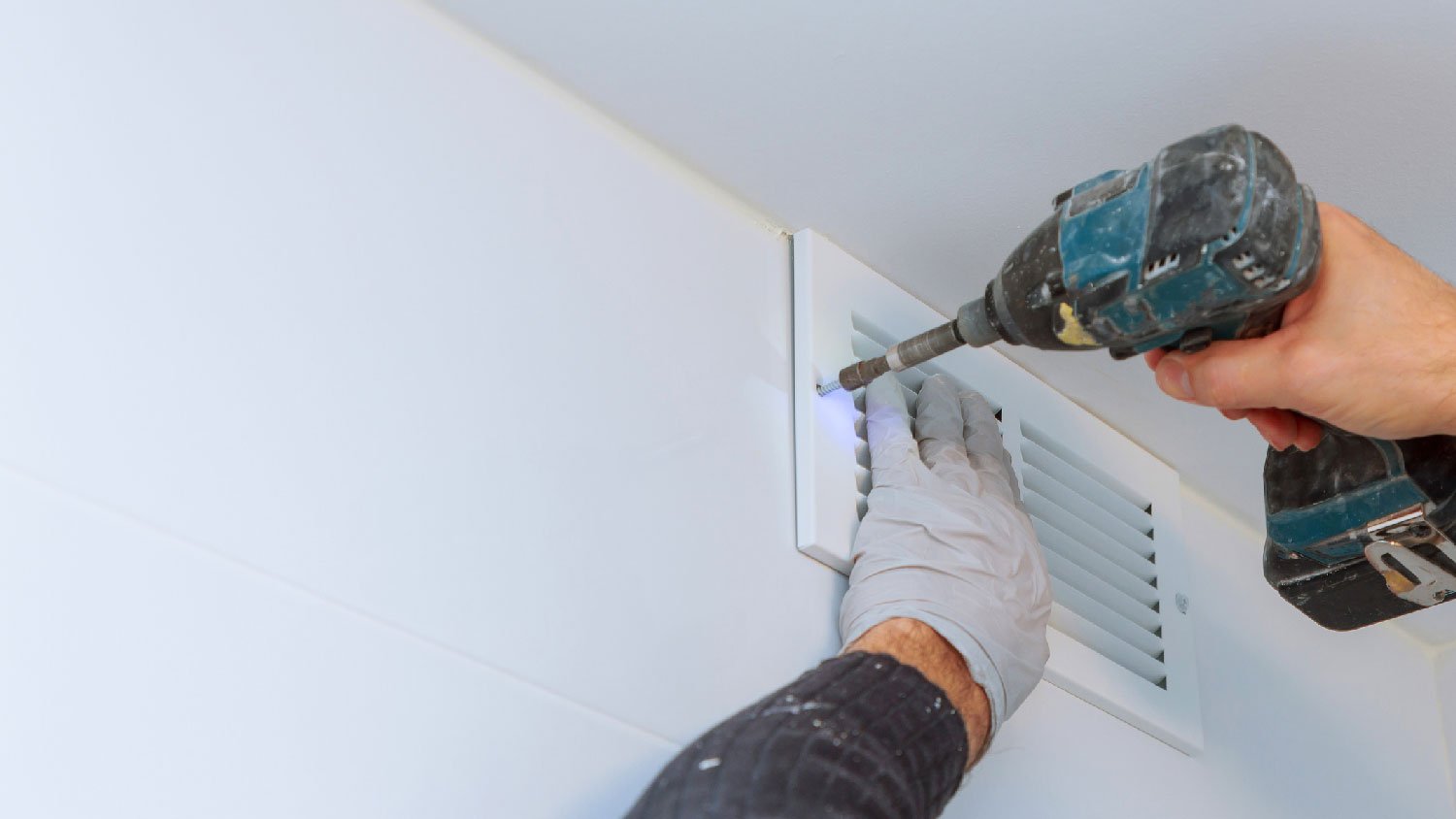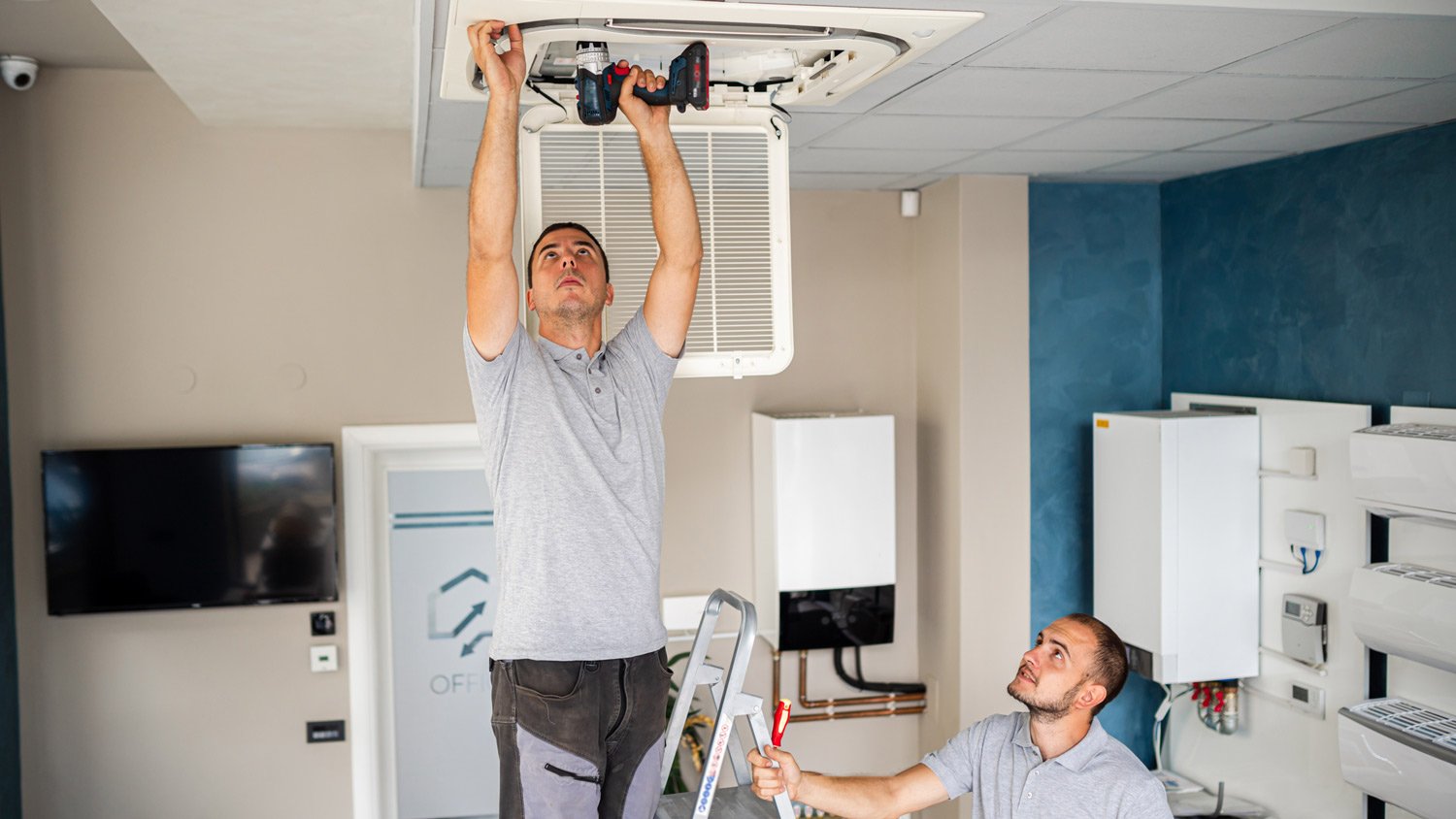
Whole-house air purifier costs depend on a variety of factors, including your home’s size and layout. The type of purifier you choose matters, too.
Clogged air ducts can be uncomfortable for your household…and your wallet


Blocked air ducts can lead to higher energy bills and poor indoor air quality.
A professional video ductwork inspection costs about $70 to $130 and uses specialized equipment to zero in on the blockage.
A trained HVAC technician can identify leaks, mold, or damage in your ducts before they turn into costly repairs.
Professional air duct cleaning improves airflow and energy efficiency in your HVAC system.
Many people don’t spend much time thinking about their air ducts until they aren’t working well. When you find one side of your home is much colder than the rest of the house, or your energy bill gives you sticker shock, you probably start to wonder if there’s a clog somewhere in the HVAC system. Here’s how to check for blocked air ducts around your home.

Although the best way to check for blocked air ducts is with the help of a professional who can perform a thorough inspection inside the ductwork, you can check for a potential clog or blockage in several ways.
First, ensure your vents aren’t blocked and disrupting the airflow through your ducts. Ensure furniture, toys, clothes, curtains, and other household objects aren’t blocking vents. Depending on your home, you may have vents on the walls, floor, or ceiling, so look thoroughly and clear any obstructions away from the vents. Leave at least six inches of clearance around vent openings.
If you dusted yesterday and were greeted with fresh dust on your nightstand this morning, your air ducts may be due for a cleaning. The air flowing through your vents can carry more dust if it has to pass through debris buildup in the air ducts.
Also, check for dust when you turn the HVAC system on. If it has to force air through a clog, it can send a plume of dust out of your vents as it kicks on.
Air filters help stop some dust and debris from getting into the ductwork, but a dirty air filter can also cause the HVAC system to run inefficiently. If you suspect a clog, try replacing the air filter (or cleaning the filter if yours is reusable). If the system is still not working as expected, it’s time to call in some experts to inspect and clean the air ducts.
When air ducts are blocked, it can cause the HVAC system to work harder to maintain the temperature you’ve set on the thermostat. If you notice an unusually high energy bill, it may signify a clog or blockage. But remember, this could also be a sign of other HVAC problems, so you may need to hire a pro to inspect the entire system.
A clog in one part of the air ducts can restrict air flow, which may cause rooms near the blockage to feel much warmer or colder than the rest of the house. If you shiver in bed when the rest of the home feels warm in the winter, the air ducts may be clogged.
However, it could also mean the HVAC damper is closed. If opening the HVAC damper doesn’t help the temperature fluctuation, the air ducts likely need to be cleaned.
If the system is so dirty that it has become clogged, it can also mean your vents are pretty dusty. Look for dust buildup on your vent covers. If you see a lot of dust on the outside of the vents, it’s a good bet that the inside is also dirty.
Those extra sniffles and coughs aren’t all in your head. If you notice you or anyone in your home is feeling sick frequently or experiencing respiratory health issues, like asthma attacks, it may be a sign that your air ducts are clogged with dust, pet dander, and other debris. Hire an air duct cleaning pro to inspect and clean the vents as soon as possible, and be sure to discuss with your healthcare provider for appropriate treatment for any illnesses.
While air ducts can experience sudden blockages, they usually occur gradually, making the warning signs harder to spot. If you notice any of these issues below, it could be a sign that your ducts are blocked or dirty and in need of cleaning:
Dust accumulates rapidly around the house, even after you’ve cleaned.
Your air filters are frequently clogged.
There are variations in temperature or airflow throughout the house.
There’s visible mold or mildew inside your air ducts.
Your air duct covers are extra dusty or grimy.
Your energy bills are increasing.
Your vents emit an unpleasant, musty odor.
You have flare-ups in allergies or respiratory issues.
There are insects or rodents inside your air ducts.
The ductwork emits strange noises, including humming, banging, or rattling.

Air ducts naturally accumulate dust and other particles over time, but that doesn’t mean you must wait until they are clogged before addressing the issue. Instead, keep up with air duct maintenance to keep your system running smoother for longer.
Your HVAC system uses air filters to capture dust and debris, keeping it from entering the ductwork. But air filters can only hold so much dust before they are no longer helpful. Depending on your system, you should change your air filters every month to every three months.
If you have pets, burn many candles, have a fireplace, or someone in your home smokes, you may need to change the air filters more frequently.
To avoid blocking the HVAC system from warming or cooling your home, ensure vents are clear from obstructions. Leave about six to 12 inches of space around your air vents. Even curtains can prevent proper airflow, so ensure your curtains are pinned away from nearby vents.
Although air duct cleaning is best left to professionals, you can help minimize buildup by cleaning the vent covers. Use a microfiber cloth to wipe down the outside of vent covers about once per month. If your vent covers are removable, take them down once or twice a year and clean them thoroughly with warm, soapy water. Dry them well with a clean cloth before reinstalling over the vent opening since moisture can cause dust particles to stick to the air ducts.
Air ducts must be cleaned regularly to clear out any dust and other debris that can build up inside the ducts and restrict airflow. You should hire a pro to clean your ductwork at least every three to five years and plan to have an HVAC professional inspect your system once a year.
A blocked air duct can negatively impact your HVAC system and even your health. If one section of ductwork is clogged, it can disrupt the pressure balance in your HVAC system.
This also means your HVAC system parts will consume more energy as they run longer to direct airflow through the clogged ductwork to cool or warm the rooms around the house adequately. Not only does this lead to higher energy bills, but it also wears down the parts, costing you more in frequent repairs and part replacements.
Finally, clogs can consist of dust, pet dander, pet fur, dirt, and other debris, leading to worse air quality. According to the U.S. Environmental Protection Agency, poor indoor air quality is linked to respiratory illnesses, headaches, fatigue, and other adverse health impacts.
Air duct cleaning costs around $380 on average, although prices typically range from around $150 to $780. The cost is higher if you have a larger ductwork system, a higher number of vents, or flex ducts, which are a type of ductwork that require special equipment to clean. Air duct cleaning will remove any clogs inside the ductwork and remove accumulated dust on the vents around your home.
You can inspect your home and vents for signs of blocked air ducts without spending any money. Checking your home for excess dust or seeing if any vents are blocked by furniture just takes a little of your time. But if you can’t identify the problem, you’ll need to hire a pro to look.
Hiring a pro to perform a video ductwork inspection on the ducts costs about $70 to $130, and this can help confirm whether your air ducts are clogged or if there’s another issue with your HVAC system.
If a pro does find buildup in the ductwork, you’ll have to hire a professional air duct cleaning service near you. This process will take a few hours or up to eight hours, but once it’s finished, you can breathe easy knowing your air ducts are clean and clear.
From average costs to expert advice, get all the answers you need to get your job done.

Whole-house air purifier costs depend on a variety of factors, including your home’s size and layout. The type of purifier you choose matters, too.

Curious about air duct cleaning costs? Get insights into pricing factors, benefits, and how to tell when it’s time for a good cleaning.

Air duct cleaning is a service for homes affected by mold, pests, or excess dust. Use this guide to find a good air duct cleaning company.

If you are wondering which duct cleaning chemicals you should use, we break down all of your options so you can make an informed decision when hiring a pro.

The best bathroom exhaust fan venting option exits through your roof. However, other choices exist if a roof vent installation is not possible.

While tipping air duct cleaners isn’t a customary practice, and isn’t required, there may be some instances where a little cash can go a long way.